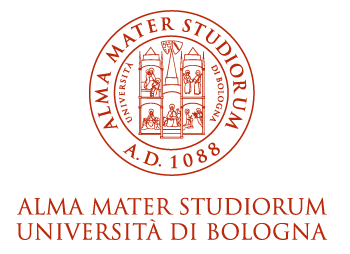To graduate, you have to sit a final examination designed to verify that you have reached the education objectives set by the Degree Programme.
You have to acquire 120 CFU to graduate from HEMAP, 18 of which are for the drafting of the final dissertation. The final examination consists in writing a dissertation on a subject related to your studies, developed in an original way, and to its public presentation and defense to a Graduation Board. The Board, having taken into consideration the presentation and your curriculum, will decide the final grade, which will be announced at the end of your presentation.
You should prepare your dissertation under the guidance of a supervisor (relatore). Typically, a good dissertation (or thesis) is the result of hard work by the candidate on a well defined project, under the expert advice of the supervisor. Hard work is a student’s task, whereas expertise and support are HEMAP Faculty's responsibility. The process of defining a dissertation project involves both parts.
In some university systems, the graduation ceremony is where degrees are formally conferred, but marks are known well in advance and the students will have completed their studies weeks or months before the day. By contrast, Italian graduations include a public dissertation defence, called "final examination", before a specifically- appointed committee.
The master thesis is an individual piece of research on a topic approved by the MTC and the supervisor. The assignment is an opportunity for students to explore in depth an area of health economics and management, to summarize the main theories and models, and to discuss their applicability. The essential requirement of a master thesis is that it literally demonstrates that students have fully understood the state of the art in health economics and management. A thesis cannot be a simple report on a traineeship or other professional experiences without additional academic/research content, although these experiences may provide a useful starting basis for a thesis. The objective of the thesis is to show that the student is able to perform scientific research individually and to report the study and its conclusions in a clear way. It likewise serves as a practice for those intending to pursue doctoral studies after their successful completion of the program.
You may choose to major in a topic related to a teaching activity included in your study plan (piano di studi). Almost any professor who taught a module in HEMAP can act as thesis supervisor, including adjunct professors, but excluding foreign lecturers, professor delivering seminars and external experts (unless provided for by a specific agreement). In special instances, and after discussing the issue with the Programme Director, graduands may choose as supervisor a professor of the University of Bologna who is not part of HEMAP Faculty. A co-supervisor (correlatore) is a teacher who may provide extra-help to prepare the dissertation. Foreign professors, lecturers of seminars and external experts can act as co-supervisor. Please note that having a co-supervisor will not grant you any extra-point on your final grade.
You are admitted to the Final Examination once you have completed all of your credits (except those for the Final Examination itself). Notice that exams grades are on a 18-30 scale, whereas the final grade is on a 66-110 scale. The starting grade is the result of the average of your exam grades converted into the 66-110 scale. To convert the grades obtained during your studies, consider the following steps:
For every exam that the student passed con lode, 0.33 points are added to the starting grade. Also, extra poins twill be awarded depending on your graduation session:
HEMAP final examination consists in the defense of the master thesis in front of a Committee composed by at least 3 professors of the School of Economics and Management. The commission can grant a maximum of 6 points to the dissertation, which are added to student’s admission grade.
Up to two (2) further points are granted to the candidate who graduates by the end of their second academic year. Therefore, for students enrolled in the academic year 2021-22 the following further points will be granted:
|
Defense session |
Further points |
|
July 2025 |
2 points |
|
October 2025 |
2 points |
|
December 2025 |
2 points |
|
March 2026 |
1 point |
The thesis topic must be related to one of the subjects covered by HEMAP courses and it is chosen according to the personal and academic interests both of the student and of the supervisor.
In general, the length of the thesis should be of about 50 pages\20.000 words including notes, tables and attachments.
The thesis to be upload through the “Studenti on line” web page (see link, deadlines and formalities in section 4) should follow these criteria:
These norms are indicative and not mandatory, but if a different format is chosen, this needs to ensure easy readability.
For the final dissertation, usually students print one or more copies of the thesis, one for the Committee and/or the supervisor and one to keep (family, friends).
Accurate referencing and bibliography is an important element of the thesis. Students should adopt a standard citation system (e.g. Harvard, Vancouver, etc.) and bibliography format.
The university takes plagiarism very seriously and has legal implications, concepts and statements taken from the literature should be appropriately reworded and referenced. Exact citations should be clearly highlighted (e.g. between inverted commas or through a different font) and the source should include the page number. On-line sources are admissible when they are appropriate and meet the required scientific standards (and should be accurately referenced in the text), but generic sources such as Wikipedia are not necessarily scientific and critically assessed and should be used with extreme care and parsimony.
The following sections are usually required in the thesis:
[ .pdf 181Kb ]
note: the guidelines refer to a.y. 25-26 and may slightly differ by the time you will graduate
Cover page/frontespizio sample
[ .docx 34Kb ]
